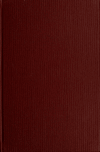This is a blog all about Bishop's Caundle, a tiny village in Dorset, UK. It's where I come from, where I call my original home, and it's a place with a long an under-researched history.
Earlier today I was chatting to potential students in my role in the Archaeology department of the University of Winchester, telling them all about the courses and life here. My spiel usually includes the tried and trusted icebreaker 'where-do-you-come-from', which 70% of the time results in a similar question being asked of me. I've always found I have to zone in from a very large scale: Dorset or North Dorset is my first answer, and if they enquire further, I say 'near Sherborne' which generates more puzzled looks than I care to disclose... a lot of families travel from Essex, London, the Midlands or even further afield, so I don't (always) blame them for not knowing where Sherborne is.
Occasionally, though, they nod in recognition, and ask me further. I say, 'Bishop's Caundle...?' with a high-pitched upward inflection, and their eyes go blank. I gabble that it's very tiny and start talking about the food hall opening times.
Once or twice, they know where Bishop's Caundle is.
I had such a conversation today, with a father and daughter who had only come from Poole. His expression was so calm when he said he not only knew where Bishop's Caundle was but he drove through it often that I had to tone down my smile a notch. I explained that I was looking for dissertation material there, and he wished me luck and said he hoped to read about what I'd find soon.
It was a brief meeting, but it gave me the final push to start this blog. I'd had thoughts in the past of collating the bits and pieces I found out about my village, so finally, here it is.
Bishop's Caundle has been somewhat neglected in documented history - there's a record of it in the Domesday Book and, if historic evidence is to be believed, not a lot has happened there since. A poem was written about us, Judge Jeffreys possibly visited, and in the nearby village of Stalbridge, a young Douglas Adams saw a sign for Bishop's Caundle and decided to name a chess move after it. However, if you look a little deeper, you realise that there are strange cropmarks in some of the fields. The website Pastscape refers to 'uncertain burials' being unearthed on a farm. Disused lime kilns are apparently dotted everywhere - with little evidence to show they ever existed. The village isn't often mentioned, despite it existing for literally ages: knapped flints have been found, proving that people lived in Bishop's Caundle way before the Domesday Book.
I will be posting all the photos, anecdotes, history and records I can possibly get my hands on, for posterity and for interested historians. There isn't a lot of evidence for Bishop's Caundle history, but what there is of it, I'm determined to uncover as a testament to this lovely and overlooked village.


